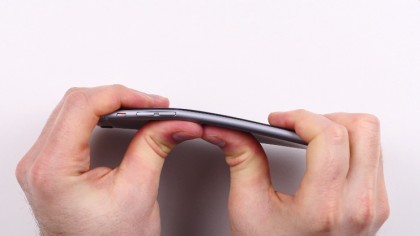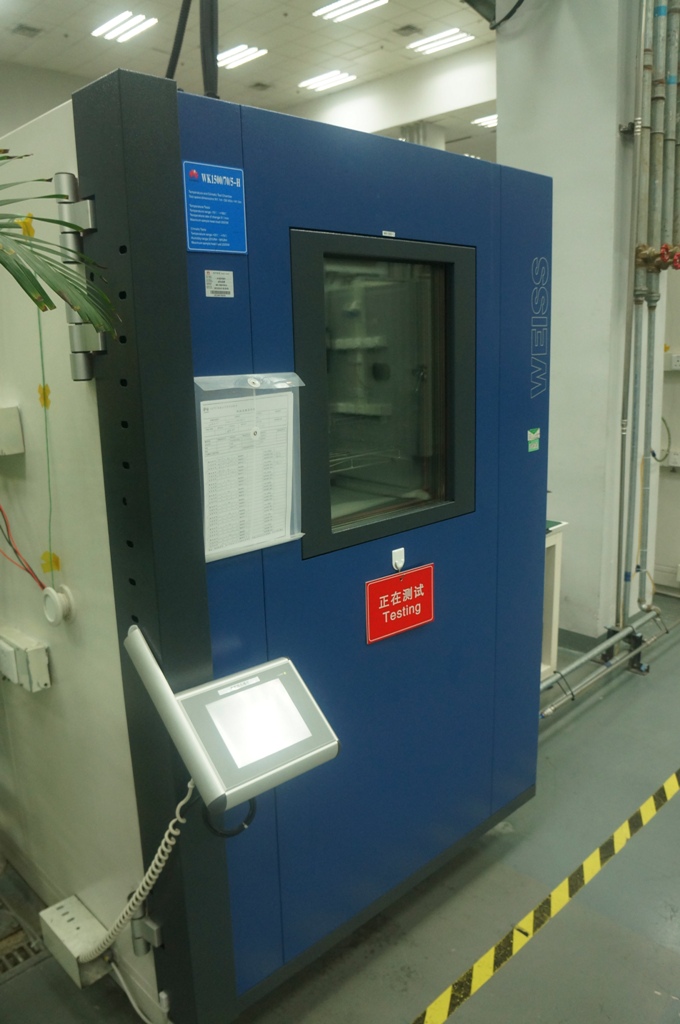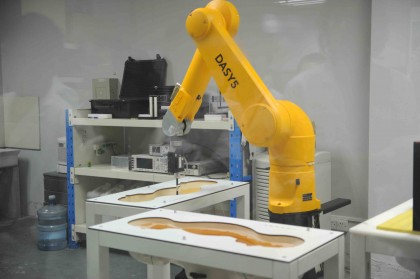The smartphone torture tests your handset has to pass
Your mobile has suffered before making it into your hand
Bend and flex
We put our phones through a lot of stress, so manufacturers need to make sure their handsets can cope with our rough and ready lifestyles.
Huawei's bending test simulates your phone bending in your pocket as your move around and sit down. The device is slipped inside a material hammock and 20kg of force is applied from above.
The force is applied 100 times to each handset in a batch, and like many of the tests in the labs none of the phones can fail. If one does, the design has to be reworked so it does pass.

Even though the majority of smartphones aren't meant to flex, you'd be surprised just how much you can twist them.
The twist test sees 2nm of force applied to the top and bottom of the handset, twisting the phone left and right. You can physically see the whole body of the device bend, and every handset has to survive 500 of these painful movements.
If that wasn't enough punishment, the handsets are also put through a machine which simulates them getting stepped on with 70 kilograms of force. Each unit only goes through this machine once, but all 10 in the batch have to survive.
You're hot and you're cold
But the torture is by no means done; moving on from the Mechanical Stress Test Labs we took a brisk walk to the Environmental and Climate Test Room.
Get daily insight, inspiration and deals in your inbox
Sign up for breaking news, reviews, opinion, top tech deals, and more.

This vast room houses 18 cubes of varying sizes, the largest of which is 17 cubic metres - big enough to fit an elephant in - with the ability to simulate a wide range of environmental situations.
Phones are subjected to rapid temperature rises, with the equipment able to force a jump of 60 degrees in just one minute.
Handsets have to survive temperatures as low as -20 degrees Celsius and as high 55 degrees C, although the final operating range you'll see on the box typically states 0 - 40 degrees C.
The steep jumps in temperature ensures handsets can operate in countries with extreme climates - places such as Russia when one minute you're inside in the warmth and the next you're outside in sub-zero conditions.
Danger: radiation
Onwards and we're met by a massive yellow robotic arm and a oddly shaped sink which apparently mimics the human body. When we first saw the set up we were a little confused.
The sink is full of liquid to represent human body tissue, and the robo arm is plastered with sensors. Any ideas?

This is a test of electromagnetic radiation on the body, to ensure new phones won't have any negative effects on our biological make up.
A handset is strapped to the arm and then moved over different parts of the imitation body, allowing Huawei's boffins to monitor any potential effects it may have.
The phones have to pass strict FCC (US) and CE (Europe) testing standards, so it's not a process which is taken lightly. Needless to say - failure here is also not an option.

That's just a snapshot into the R&D process for every new smartphone, we didn't have time to make it to the likes of the thermal lab, impulse current test room or energy efficiency lab.
While we strongly recommended against you trying any of this at home, just spare a thought for the humble handset in your hand - it's much tougher than you think.

TechRadar's former Global Managing Editor, John has been a technology journalist for more than a decade, and over the years has built up a vast knowledge of the tech industry. He’s interviewed CEOs from some of the world’s biggest tech firms, visited their HQs, and appeared on live TV and radio, including Sky News, BBC News, BBC World News, Al Jazeera, LBC, and BBC Radio 4.